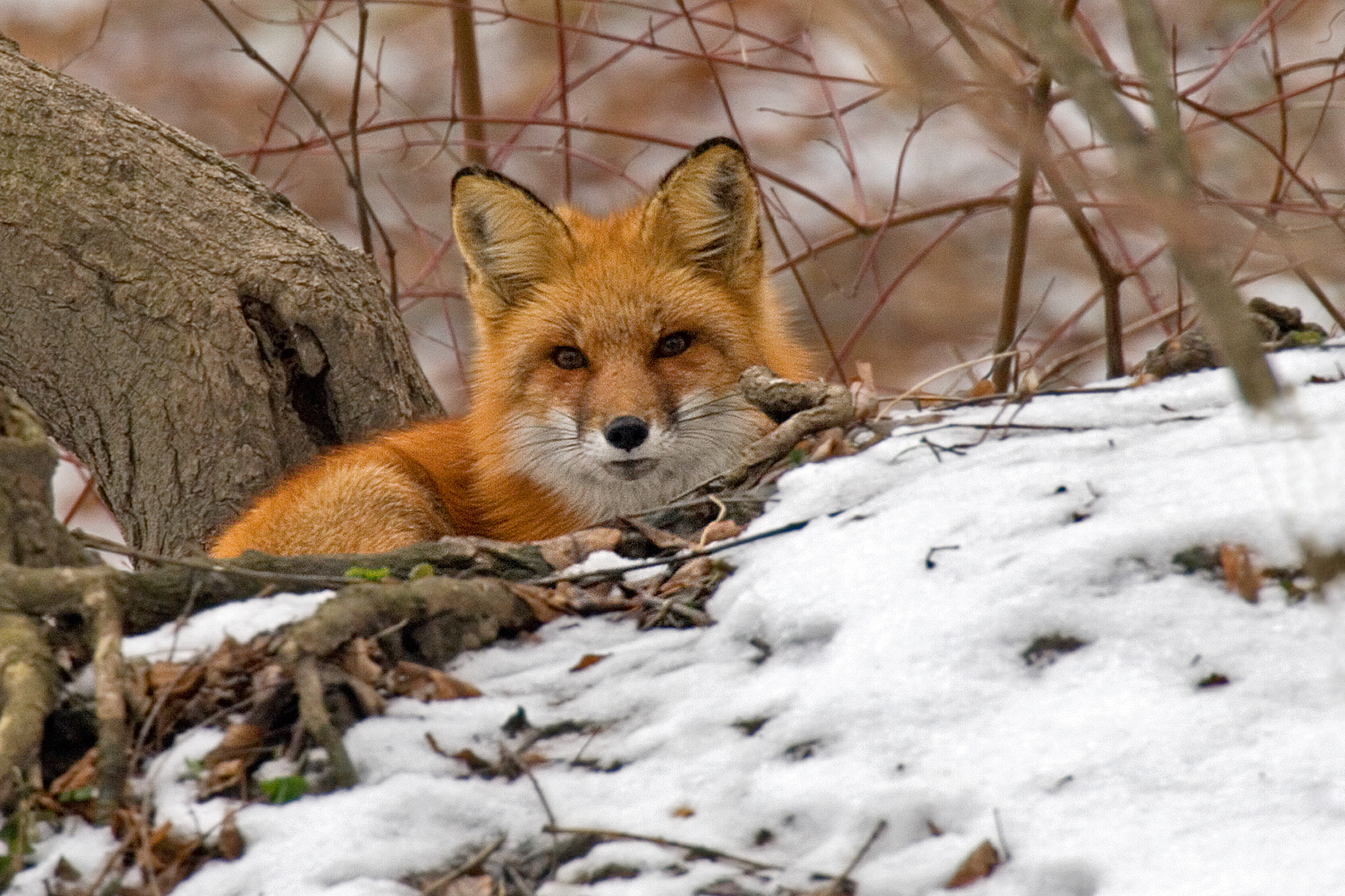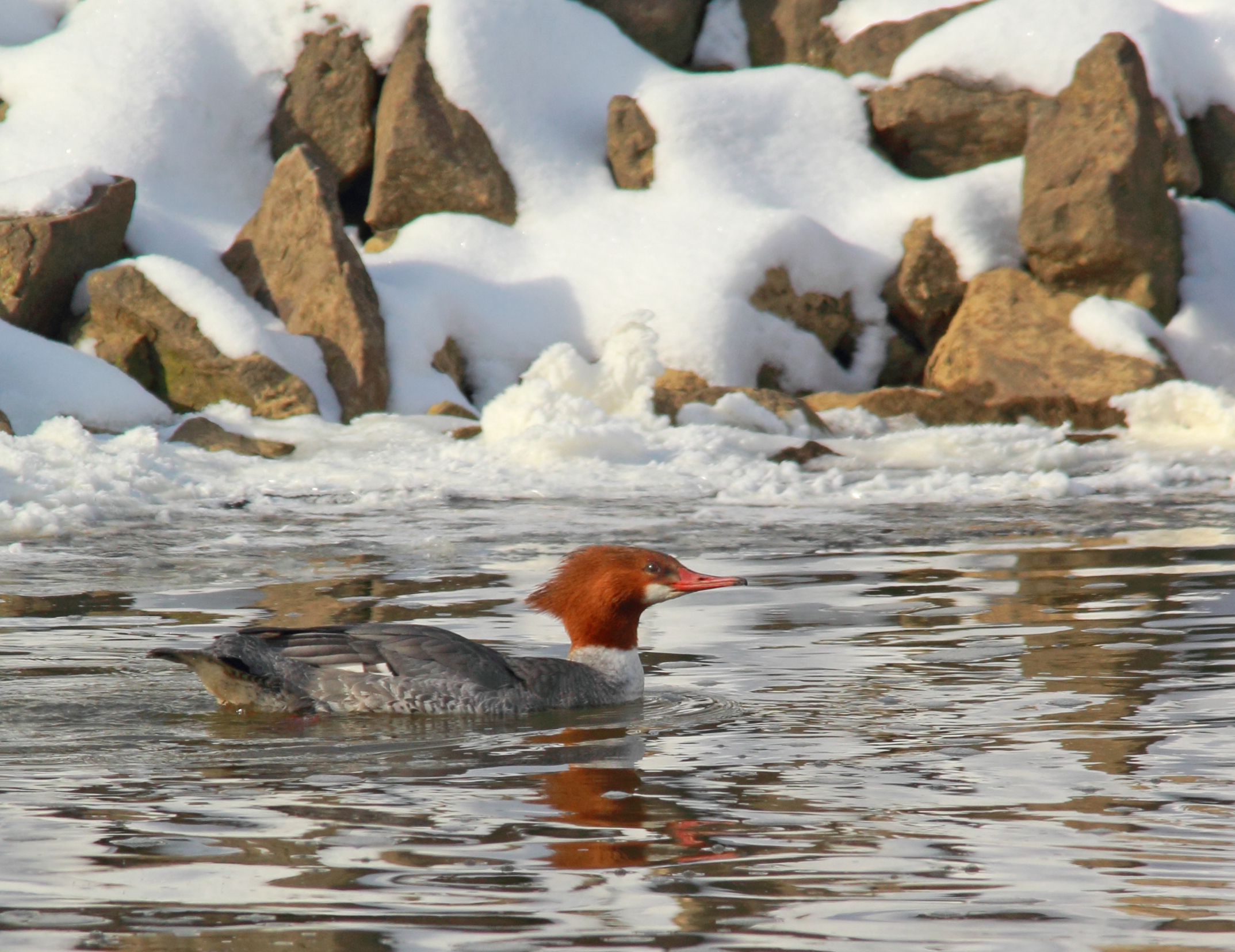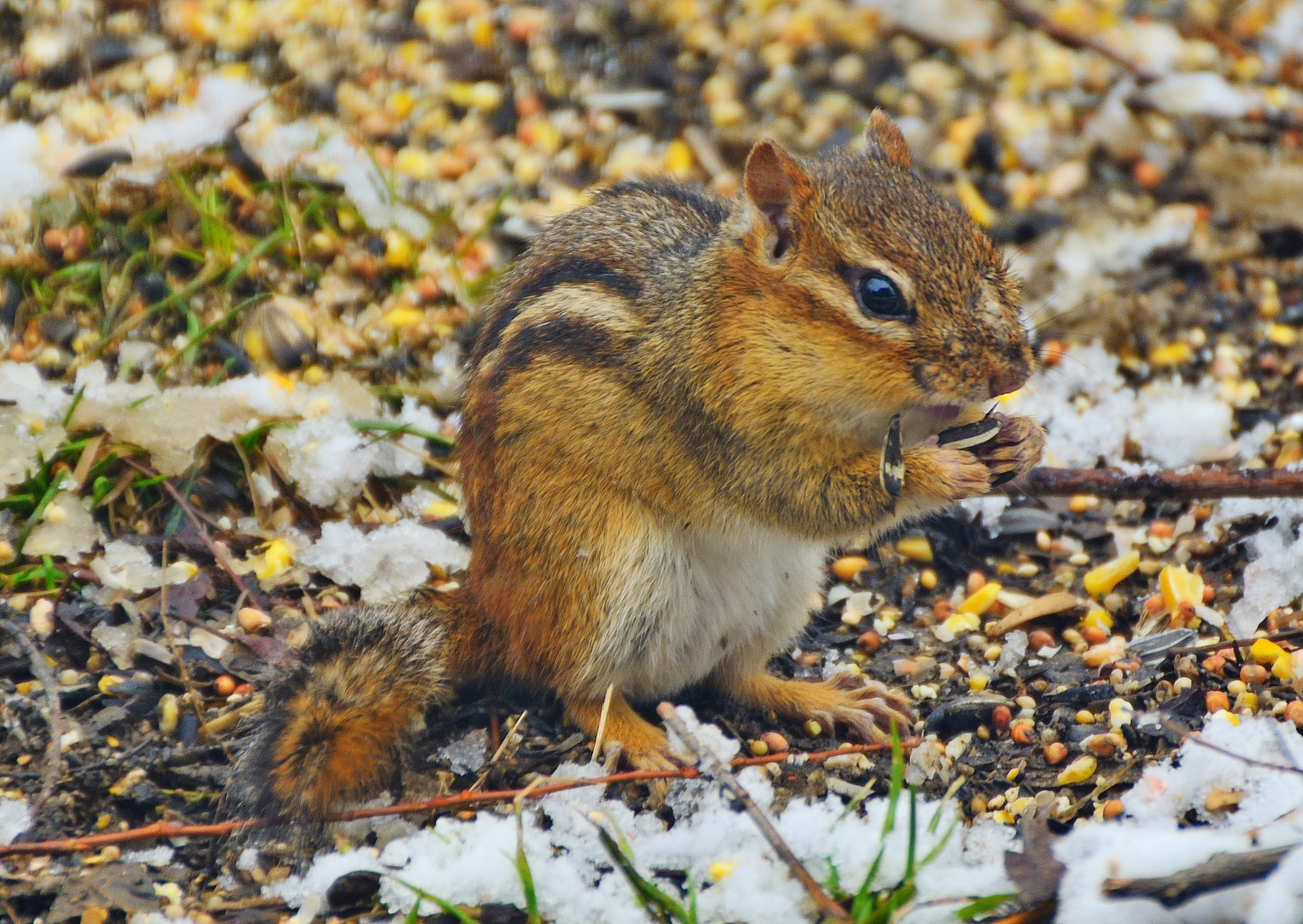Scott Felker
Naturalist, Three Creeks Metro Park

Ah, winter. A time to migrate, hibernate and drink hot cocoa. Well, we might do the latter on chilly nights and dream of doing the first two things on a regular basis by the time February arrives.
For wildlife, winter can be the most challenging time of the year. Animals have to find ways to stay warm and fed. Mammals like red fox, raccoons and gray squirrels grow a double coat of fur to keep warm and dry. The soft, fuzzy undercoat is like a cozy sweater while the longer guard hairs on the outside protect it from wind and water. White-tailed deer are not just double-coated but have hollow guard hairs that trap dead air. They are so well insulated that snow can accumulate on a deer’s back without melting. The dense, fine hairs in a beaver’s undercoat have tiny hooks so the hair meshes together to help keep it warm and dry even while swimming in icy water.

Feathers keep birds warm. Soft, downy feathers insulate while the larger outer feathers act like a water-resistant jacket. Ducks and geese waterproof themselves by using a gland near their tail to spread oil through their feathers with their bills. Waterfowl have adapted to swimming in very cold water and standing on ice despite not having insulating fat or feathers on their webbed feet. Cooler blood flows through their feet and is warmed as it enters the body. Enough blood flows to keep the feet supplied with oxygen while keeping them just warm enough to avoid frostbite. Small birds like Carolina chickadees huddle together on cold nights and occasionally shiver to raise their body temperature.
Groundhogs are deep or true hibernators. They put on fat during summer and fall and spend as long as five months in their winter den without eating. Their body temperature may drop to 37 degrees Fahrenheit and their heart and breathing rates slow dramatically. Little brown bats hibernate in caves or mines and might take one breath per hour!

Chipmunks enter torpor – a form of light hibernation. Unlike groundhogs, they wake up every few days to raise their body temperature, urinate and eat stored seeds and nuts. Painted and snapping turtles spend the winter under water where temperatures are more consistent than in the air. They absorb oxygen from the water as it touches their skin, mouth and cloaca. As winter progresses and oxygen in frozen ponds is used up, turtles switch to a metabolism that doesn’t need oxygen.
Tree frogs like spring peepers might have the coolest (get it?!) way of surviving winter cold. As peepers huddle beneath the fallen leaves and the temperature drops, sugars in the frog make a kind of antifreeze that causes most of the water in cells to be forced out. Ice forms between the cells so the microscopic ice crystals don’t damage the contents of the cell. The stored sugar that makes the antifreeze also provides just enough energy to keep the dormant frog alive until spring.
Now, it’s time for some hot cocoa.
